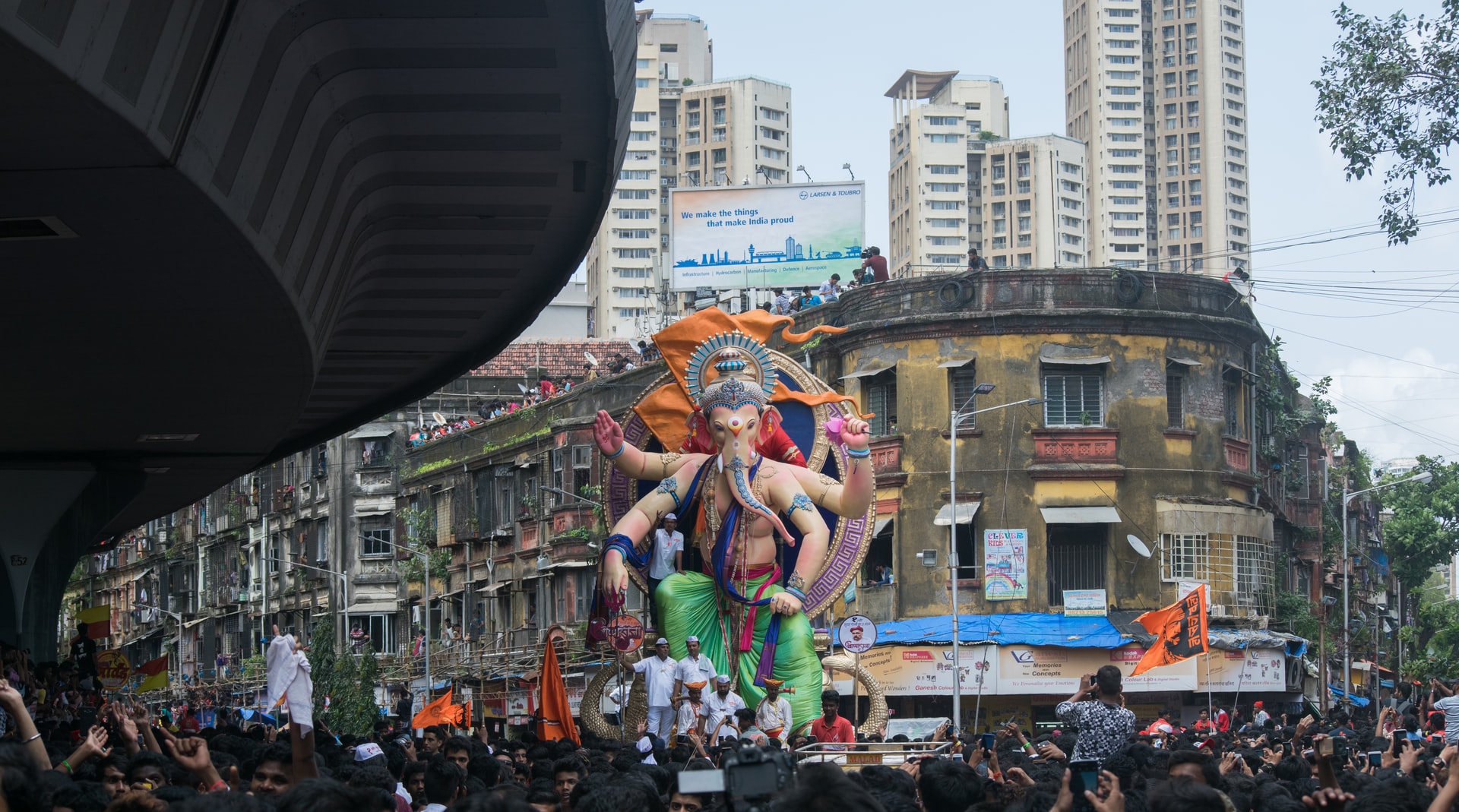At the stadium, tickets were indeed on sale – from a little window. Around it swarmed hundreds of Englishmen. It was polite mayhem. Because this was cricket, and despite cricket attracting a not entirely different demographic to soccer in England, the fans somehow chose to behave differently – like normal, if not always perfect, human beings.
So, after 20-30 minutes in the middle of this throng of people around the little window, I exchanged a fistful of rupees for a five-day ticket for the Bombay test – the third match in the series. I walked away, past the makeshift Barmy Army merchandise stalls. I don’t get the Barmy Army thing.
VIDEO
Barmy Army
The whole idea of the Barmy Army seems more Australian than English to me – that wanting to identify as part of a group, a sporting group or club, or on a buck’s weekend. All walking around in the same t-shirt or cheap polo shirt covered in logos, images, and writing. There was so much to look at that you’d have to ask them to stand still if you wanted to read it. And over the course of the next five days, I saw those Barmy Army shirts on hundreds of people. I don’t get it; the need to conform to something that by its very nature should be, or was, non-conformist.
“What flavour is it?” I asked the waiter.
Tickets in hand, then in pocket, I walked away from the Wankhede. I ambled slowly back through the late afternoon humidity to Colaba Causeway via Churchgate and the Oval Maidan. Much of the architecture seemed very British. Squint, block out the fact that it was actually sunny, and you could almost be in one of those other great British Victorian-era cities – somewhere like Cardiff or Belfast or Glasgow.
Boys playing cricket.
Some boys, playing cricket on Oval Maidan after school, accosted me – in the friendliest way. Was I here for the cricket? Where did I live? Who was going to win? Which Premiership team did I follow? Three of those four questions generated standard responses: Yes, England and Arsenal. The answer to question two though threw them a bit.
“Australia?”
“Yes, Australia.”
“But you’re English. You live in Australia?”
“Yes.”
“Why?”
“Well… a number of reasons…”
“So why don’t you support Australia?”
“Well, I’m English, and…”
“But you live in Australia…?”
And on it went.
Five days later.
Breakfast option “two”
I’d long since given up breakfasting at the Hotel Rat-Sack. The first day I chose option one: hard-dried eggs on cold white-bread toast, accompanied by 150ml of warm orange juice from a carton. On day two I had the other option, ‘toast with the jam’. The toast was as per option one. The jam was bright red. It looked like some kind of nuclear fall-out. It wasn’t strawberry or raspberry or anykindoffuckingberry .
“What flavour is it?” I asked the waiter.
“Jam,” came the irritated monosyllabic response.
It was kind of generic, yet overpoweringly sweet – a cross between IRN Bru and something sweeter.
Hence, after trying both breakfasts chez Rat-Sack, I’d decamped to the Mondegar for toasties, Fanta and a read of the English language Times of India each morning.
Game on
On that fifth morning, the game was poised quite delicately. Theoretically, it could have gone one of three ways. India batted last and started the day 1/18. They needed 300-odd to win. Unlikely, but doable – on other grounds perhaps. No team had won a Wankhede test chasing more than 163. A draw, I felt, was the likeliest outcome until I read some of the stats about teams batting last at the Wankhede. A shiver went down my spine. It’s on, I thought.
I took a tuk-tuk to the stadium. Not sure whether he did it on purpose out of mischief, or spite, or because he was just plain dumb, but the driver dropped me at completely the wrong end of the stadium. I had to walk through hordes of pissed-off Indian fans to get to my section. And they were seriously pissed-off with their team’s performance. There was something quite ugly in the air. Earlier in the test, they’d booed Sachin Tendulkar – India’s greatest player, and a Bombay local. They were pissed-off, but it wasn’t aimed at English fans. It was a bit uncomfortable though, but hardly like walking the wrong way around Anfield or Elland Road in the 1980s.
At lunch, India had progressed, if you like, to 3/75. The run chase looked out. It was probably now 60:40 an England win over the draw. And then the Indian tail did the opposite of wagging. It collapsed, England-style. In 15 overs after lunch England took seven Indian wickets for just 25 runs. It was exhilarating; test cricket at its absolutely most exciting.
Shaun Udal’s test
It was Shaun Udal’s test. He was a 37-year-old journeyman county player who’d made his test debut just a few months earlier. Bombay was his fourth and final test match. He finished with 4/14 that day, off just over nine overs. A fleeting, but memorable test career, and a day he’d surely never forget.
It was England’s first Test win in India in 21 years, and their biggest there by runs. It levelled the series at 1-1. India’s a notoriously tricky place for visiting test sides. But ultimately it was a quite comfortable England win – and quite some win, considering they were missing a number of first-choice players.
That afternoon, walking away from the Wankhede, I knew I’d witnessed something really very special. That victory, by an inexperienced rag-tag England team in India, in Bombay, was something to behold. It was time for cold beers in the Mondegar.
